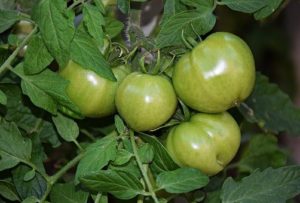Tips for Planning a Vegetable Garden
If you’re new to gardening, it can be difficult to know where to begin when planning a vegetable plot. From deciding where to locate the veg patch and choosing what to plant to knowing how to fertilise it with mulching or mushroom compost, gardeners have a lot to consider when planning a new, productive part of their garden.
Madingley Mulch are one of the most trusted gardening and compost suppliers in the East of England, serving customers in Cambridge, Essex, Suffolk and the surrounding areas. To help you create a fertile and fruitful vegetable garden or allotment, we’re taking a look at some of the key aspects of preparation, planting and care for the growing veg.
Preparing the Soil
The first step in creating a brand new vegetable garden is clearing the area. You’ll need to remove the grass, get rid of the weeds and pick out as many stones as you can. Once you’ve cleared the area, you’ll need to dig it over to aerate the soil and prepare it for planting. At this stage, it’s a good idea to dig in compost, mulch or other elements that will enrich the soil and help your veggies to thrive.
In areas where you have heavy clay soil, which is the case in many parts of Essex and Cambridgeshire, organic matter like mushroom compost, Black Fen soil, manure or soil conditioner will help to add nutrients and improve its structure. If you’re unsure which type of soil improver is right for your garden, ask one of our expert team for advice before you buy.
Sowing Your Crops
Once you’ve done the hard work of preparing the soil and clearing the area, the fun can begin. If you’ve decided to grow your vegetables from seed, you can now start ordering in your stock. Remember that different plants grow better in different conditions, so take the sun exposure, soil type and water level of your vegetable patch into account when ordering your seed supplies.
In sunny vegetable gardens that are sheltered by fence panels or nearby trees, broad beans and peas can be sown out. If you have a greenhouse or covered area, herbs, salad leaves, celery and potatoes can be sown in pots ready to plant out when the weather warms up.
Cucumbers, tomatoes, leeks and aubergines can all be started in the greenhouse, while beetroot, carrots and radishes can be grown in a cold frame and raspberry canes, strawberry plants, blackcurrants and gooseberries can all be planted straight into the veg patch.
Care for Growing Plants
In order to get great results from your vegetable garden, you need to care for it regularly throughout the growing season. You’ll have to keep weeds to a minimum to avoid valuable nutrients being stolen away from your veggies. This can be done by pulling weeds out by hand, but you can also prevent them growing in the first place by mulching the ground in between your vegetables. This mulch will also help to protect your vegetables from unexpected bad weather.
You’ll also need to ensure your vegetables get plenty to drink, especially during periods of dry or hot weather. As different crops require different levels of hydration, it’s important to check each plant’s requirements before you get the hose out. In the winter months, when the rain seems almost endless, extra watering probably won’t be necessary. Keep an eye on water levels to make sure your plants are getting enough, and consider giving them a little extra food during cold snaps to keep them strong.
If you’re planning a vegetable patch and searching for soil improvers, mulch, compost or any other gardening supplies in Cambridge, Suffolk or nearby areas, Madingley Mulch can help. Click above to find out more.
Back to blog




